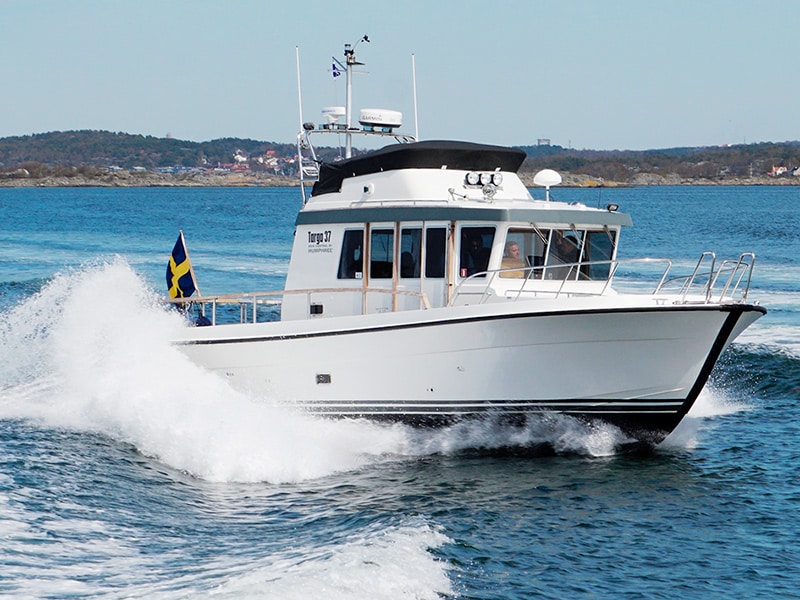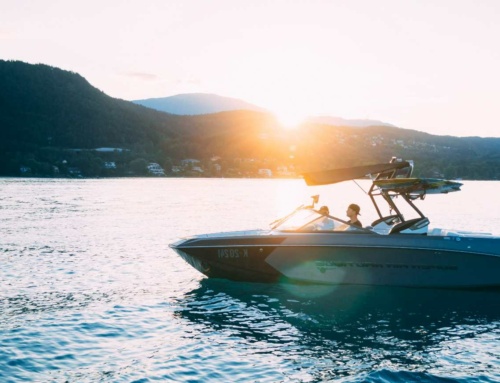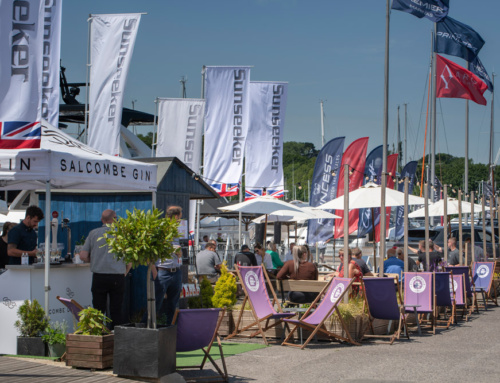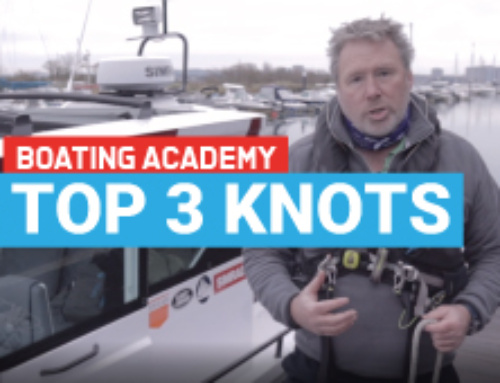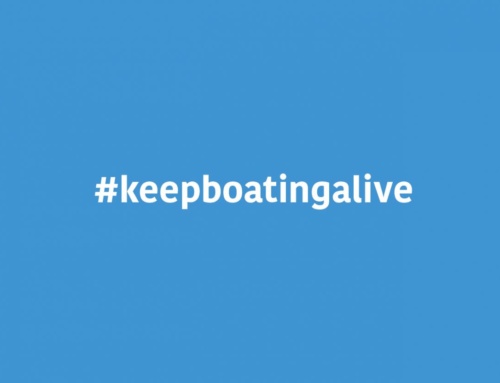- Having tried Humphree’s systems before, it came as no surprise that they worked as they’re supposed to
- Hats off to Humphree for producing something that displays genuinely innovative thinking
- The real stroke of genius is that at anchor the owner can opt to rotate the fins through 180 degrees
Humphree Stabiliser & Trim Systems
Recent developments in stabilising and trim systems have had an enormous impact on boating. Dave Marsh jets off to Sweden to test the latest innovations from the Humphree stable …
There has been a revolution going on in the boating world in the last decade. In that time, we have seen advances in stabilising and trim systems so great that they have been able to fundamentally transform the boating experience. Trim systems are now able to provide even the most modest of boats with impressively effective automatic or semi-automatic control of their running attitude underway. The likes of Lenco and Bennett use conventional trim tabs to do this, whereas Volvo and Zipwake utilise interceptors. Engine manufacturers are getting in on the act too by providing automated trim systems for their engines; Evinrude’s bigger E-TEC engines now have this facility, and Volvo’s optional PowerTrim Assist can be programmed to control the trim of their sterndrive legs.
Trim tab and interceptor systems rely on dynamic lift, so they only work underway. If you want to stabilise your boat at anchor or at very low speed, gyroscopes and zero-speed fins are the obvious rivals. However, amazing ingenuity has seen these systems joined by other inventions such as Quantum’s Dyna-Foil and RotorSwing’s Wing Yacht stabiliser, plus DMS’s AntiRoll and the MagnusMaster, which uses retractable spinning cylinders to generate lift.
Humphree’s interceptor-based boat control system has been around for some time, and I’ve already experienced this system on several craft. It is extremely robust and well engineered, and on all the Humphree-equipped boats I’ve driven it has always performed very well. Even its interceptor rivals seem to concede that it is the Rolls-Royce of interceptors – but then it comes with a Rolls-Royce price tag too. However, the Swedish company obviously decided that it was missing out on the burgeoning market for very low-speed and anchored stabilisation, so now it has developed its own zero-speed fin, designed for boats as small as 40ft. We flew to Sweden to discuss the technicalities and do some hands-on testing.
Innovative Thinking
Hats off to Humphree for producing something that displays genuinely innovative thinking. The fins themselves are hollow carbon fibre, so they are extremely light and easy to handle. I know because I picked one up unaided. The fins also have an external flange mount, not the usual penetrating shaft, again easing installation. Of more interest to the end user is the fact that the carbon and glass fibre flange mount is designed to shear away from the fin itself in the event of a severe impact. Of course, it’s not possible to predict what collateral damage a severed fin might cause, but in all likelihood the hull should remain intact and watertight.
However, the real stroke of genius is that at anchor the owner can opt to rotate the fins through 180 degrees. At anchor, zero-speed fins generate their lift by flapping rapidly back and forth. Because the action is not unlike sculling with an oar, at rest the fins also propel the boat forward as well as stabilising it, invariably forward onto the anchor, and at worst into other closely anchored boats. By swivelling the fins through 180 degrees, they gently pull the boat back onto the anchor chain. Hey presto – no more costly crashing through your peaceful mooring. Being Swedish, Humphree have also thoughtfully allowed for Scandinavian-style stern anchoring – here the fins are left in their normal position, so they pull in the other direction. I think this is one of the most significant developments in zero-speed fin systems so far.
Humphree made much of their 24v DC electric motor’s compact dimensions, but I think this is a red herring (doubtless pickled – after all, we were in Sweden). For instance, the SPS55 hydraulic actuator powering Sliepner’s curved fins has a very slightly larger footprint than Humphree’s 500mm-diameter unit, but at 201mm tall it is only two-thirds of the Humphree’s 305mm depth. Far more impactive is the fact that the installation of Humphree’s electric system is simplicity itself, with just a few tiny control wires and (albeit stout) 80-amp power cables to connect, and no hydraulic hoses or power pack to install. That will make it extremely attractive to the retrofit market.
Hands-on Test
Because users of zero-speed stabilisers, either gyros or fins, often want to leave them running overnight when they’re anchored, noise is a hugely important issue. I’ve heard owners of both hydraulic and electric stabilisers claim that their system is the quieter one. Sometimes sound insulation is the key, at other times structure-borne noise is the issue. Anyway, after hearing Humphree’s electric actuators (motors) loudly seesawing back and forth on their various test rigs in their factory, I was not hopeful. And yet inside the aft cabin of our Azimut 68S test boat, testing the zero-speed function at rest, the noise levels were surprisingly subdued, even though the installation had nothing more than a thin perspex inspection hatch covering the actuator and a tiny amount of thin soundproofing inside the surrounding box. Humphree’s motor is cooled by the water outside, so as heat build-up is not a problem, builders are free to substantially insulate the motor’s housing with whatever materials they choose. It’s impossible to say quite how Humphree’s motors might sound in the dead of night in a silent anchorage, but my solitary experience suggests that the frequency of sound they emit won’t be difficult to suppress.
The big question is, at anchor, how did Humphree’s zero-speed fins fare against gyros? Well, at rest, neither system can generate their correcting forces ad infinitum. So given a large enough swell, any boat will eventually begin to roll when either system reaches the end of its physical travel and runs out of puff. However, there’s no doubt that at rest, and especially in the sort of gentle conditions we encountered, gyros reign supreme. Humphree estimate roll damping on the Azimut 68S of 65% (and that’s roughly what it felt like too), whereas in broadly similar conditions, testing a Seakeeper gyro on a Ferretti 630, turning the gyro on made the big Italian boat feel as though the surrounding water had turned to concrete. This is not a reflection on Humphree’s fins, it is simply a function of the behaviour of all zero-speed fin systems. Gyros are able to develop their full correcting force almost immediately, and no flapping fin is ever likely to be able to fully match that.
Sadly, the gentle test conditions meant that we couldn’t properly test Humphree’s fins in the conditions where the tables would be turned – underway at speed. The hydrodynamic lift on a fin obeys the square law; ergo, double the speed equals quadruple the lift. So whereas all of the gyros I’ve tested have started to run out of steam in larger waves in the low teens at best, fins are able to generate huge amounts of lift above 10 knots. Of course, I can’t say unequivocally that Humphree’s fins will be amazing underway, but given that the Swedish company has years of experience perfecting stability algorithms to control its interceptors, it’s unimaginable that it won’t be able to successfully transfer that experience into its fins.
Given how markedly battery capacity varies between otherwise similar boats, and given how much the current draw will fluctuate depending on the conditions, it seems fruitless to try and calculate whether the average boat will have the battery capacity to power Humphree’s fins overnight without the potentially intrusive sound of a supporting genset. But with this in mind, Humphree have incorporated an ingenious three-mode setting into their controls. This allows owners to opt for mid or low mode; this limits and reduces the maximum 80-amp current draw, and in return the owner accepts that the stabilising motion is reduced accordingly.
Full Boat Control
Although Humphree’s new fins can be bought separately, as can their existing interceptor system, buy them together and the myriad functions are all under the control of a single digital brain. Although this is welcome, I don’t believe it’s that important. Humphree’s interceptors can and have been combined very successfully with other manufacturers’ fins. And in my opinion, combining them with a gyro instead of fins may be better for some owners; it depends on a multiplicity of things, including the type of boat and the customer’s operational needs.
However, as interceptor-based boat control systems go, Humphree are currently the top banana. Their system comes in four forms:
Automatic Trim Control allows the helmsman to set the running trim (or pitch as it’s sometimes referred to) and then the system tries its level best (ho ho) to maintain that optimum running trim. Bear in mind that Humphree are not claiming that pitching in waves can be eliminated – the forces are too great for that. The trim Humphree refer to is the bow-up, bow-down running trim that the interceptors continuously optimise as fast as they can. Like all functions, it can be manually overridden at any time.
Automatic List Control has the same functionality but corrects instead for transverse heeling (or roll as it’s sometimes called) due to the effect of waves and/or wind-induced heel. Although it’s normally used to hold the boat level, it can be useful on a planing boat in a beam sea to tilt the boat away from the sideways-on waves, to reduce the slamming on the upwind chine. It feels counter-intuitive, but it can make a big difference to the ride comfort on some boats.
Active Ride Control is essentially a more sophisticated version of the trim and list control, and takes its information from a ride control unit containing accelerometers, a GPS and a gyro sensor. The system aims to provide ride control that handles trim and list but is also fast-acting and clever enough to effectively provide a perceptible measure of stabilisation underway, although generally not on a par with a full fin system. Herein lies one of the critical advantages that interceptors have over their conventional trim tab counterparts – rapid speed of response, which in Humphree’s case is 0.75 seconds from full up to full down on the interceptor blade.
The fourth part of the system is called Coordinated Turn. This provides what I call a ‘gravitationally neutral’ turn. That is, the angle of heel in a turn is manipulated such that, whatever the boat’s speed, your body (or for that matter, the drink you’ve just poured) is neither forced towards the outside of the bend nor left to fall towards the inside of the turn.
Having tried Humphree’s systems before, it came as no surprise that they worked as they’re supposed to. However, that didn’t mean we didn’t learn anything. This time, the big surprise was finding that a lively sterndrive boat with already excellent handling and dynamics – the Botnia Targa 37 – so obviously benefitted from Humphree’s system. The Active Ride Control noticeably stabilised the boat as it crossed the wake of the big Azimut, and the Coordinated Turn function made the turns far more comfortable. Although Humphree’s fins are intended for 40ft and upwards, their interceptors have the potential to improve the ride quality on far smaller boats. Although comfort is often used as the key marketing tool for these and countless other trim and stabilising systems, in my opinion, on-board safety also improves dramatically, especially in rough conditions – and not just for those with limited boat-handling know-how, but for those with years of experience too.
One final word of subjective advice. If you have a little more to spare than the roughly 5,000 euros that the Auto Trim and Auto List system would cost (for a 45-footer), then spend the next 2,000 euros on the Coordinated Turn function before you splash out on the final 5,000 euros for the Active Ride. Humphree’s basic trim and list functionality is already very effective, and I reckon you might be astonished just how comfortable a boat can be when every turn becomes a ‘gravitationally neutral’ affair.

